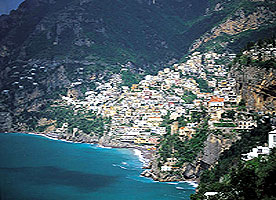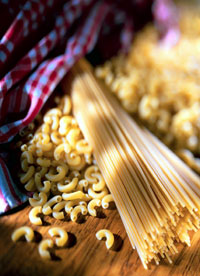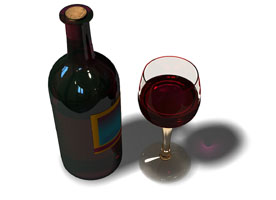 Italian Cuisine Italian Cuisine Italian cuisine is one of the oldest in Europe and one of the best known outside its country of origin. Derived from Greek gourmet traditions, these being derived in their turn from oriental cuisine. Throughout the centuries each culinary tradition has become firmly established in Italy . They gradually attained perfection in the country that has adopted them. Any common Italian dish can find its roots in the ancient Roman traditions. 
The attraction of modern Italian cooking lies in the quality and variety of its ingredients and for this reason, Italian specialties make their mark from the various regions and localities as opposed to the country as a whole. The Tuscans first forged the link with the other regions of the country, with the opening of restaurants serving local and regional specialties to be enjoyed by all. The other regions quickly followed suit, but regional cooking has always remained distinct. 
In the north, Venice is known for its fish and seafood with an influence from Austrian cuisine including tiramisu, the Lombardy region is known for risotto, ossobuco, minestrone, and gorgonzola. Further east in Valle D’aosta , Piedmont , and Liguria regions, polenta, zabaione, ravioli, and other highly seasoned, stuffed dishes exemplify their cuisine. Emilia-Romagna contains the culinary capital of Bologna , with its specialties of charcuterie (especially prosciutto ham), and many variations of paste asciutte (pasta with butter), tortellini, and formaggio parmigiano (parmesan cheese). Tuscany is widely considered the garden of Italy with its vast orchards and vegetable production. Also, Tuscans are known for their use of red meats. The Marche region utilizes its resources of wild game, olives, and mushrooms.

Campania , home to Naples , makes famous its use of seafood’s, mozzarella, cannelloni, macaroni, and of course, its pizza Margherita. Lazio, where Rome lies, has succumbed to be the melting pot of all regions, but not without its own contributions, Particularly Pasta alla Carbonara and Saltimbocca. As you venture further south, The region of Apulia , or Puglia in Italian, is known for its figs, melons, olive oil, and the calzone. Basilicata has a rich heritage in charcuterie with its offerings of capocolla and peperonata. Calabria produces eggplant, tuna, zuppa de pesce, and provolone cheese. The two islands of Sicily and Sardinia round out the wide variety of Italian cuisine with contributions of pecorino cheese, honey, and notably, wild boar ham from Sardinia, cannoli, caponata, citrus fruits, and fish cooked en papillote with aromatic herbs from Sicily .
  It is the pastas of Italy that have aided its worldwide culinary notoriety. There are as many varieties as there are specific dishes they are used in. Spaghetti and macaroni are the more common. Spaghetti is long, usually round, and of variable thickness. Vermicelli is generally the thinnest, followed by, capellini, fedelini, spaghettini, spaghetti, spaghettoni, spaghetti alla chitarra, perciatellini, bucatini, and the thickest of the spaghettis is perciatelloni. Fusilli lunghi is also considered spaghetti, with its curly, long strands. Macaroni are thicker types of pasta with a hole running through them, basically turning them into tubes. Mezze zite, being the smallest, followed by, macaroni, mezzanelli zite, zite, zitoni, ziti, maccheroni alla Genovese, and the largest being, cannelloni. From there, pastas take on a flat surface with linguini, fettucelle, taglierini, tagliatelle, fettuccine, pappardelle, and lasagne being the widest of the flat pastas. After all these, pastas are evermore transformed by the unlimited amount of shapes and small, bite size pieces they form. Farfalle (bowtie), conchiglie (shells), tortelli (or the stuffed tortellini), penne rigate, eliche (spiral), radiatore, etc.  
Pasta made from the same types of dough taste exactly the same, however they look. Thus, it is the shapes, basically the diameter in long pasta, and hence the names that bring variety to the range of pastas. Diversity is only achieved through different types of dough, either made from whole grains, or, incorporating flavorings like, spinach, aromatic herbs, etc. As a final word on pastas, let it be known that dried pastas cannot compare with fresh pasta in terms of taste. In most cases, the commercially prepared pasta products found will always be a substitute for its fresh counterpart and therefore, to be regarded as a different form of pasta altogether.


Italian Wines

With France and Spain not far behind, Italy (in most years) is the largest producer of wine in the world. Although a major exporter, huge quantities of Italian wines are consumed per capita on the home market. Almost every region not only makes a wide variety of table wines, but also produce a number of dessert or sweet wines, sparkling wines and large quantities of vermouth and various liquors. In fact, the whole country is one long vineyard, and as the climate, soils, and grape varieties vary so much, it is no wonder that until recently, Italian wines were somewhat enjoyed where they were made but not always able to maintain a quality sufficient to satisfy export markets. 

Certain native Italian grapes, such as the black grape Sangiovese (used in chianti) and Nebbiolo, are augmented by many classic varieties including Pinot blanc, Pinot noir, and Cabernet Sauvignon. A wine made in northern regions such as Tuscany or Piedmont, will be quite different from those made in the south such as Sicily, even having been made from similar or identical grapes.

In very general terms, the north makes the finest red and white wines, also sparkling wines of high quality such as those of Asti . Recent advancements in Sicilian wines have brought added notoriety to the island best known for the rich wines of Marsala which can be dry as well as sweet, also the table wines from the volcanic slopes of Mount Etna. One interesting fact about many of the important Italian wines is that in years that are not wholly successful in France maybe triumphs in Italy , with this said, generalizations should not be made about them. View some of our Italian recipes
 | Tiramisu
Difficulty Level: Easy A traditional dessert, the term means |
| |
|
|



